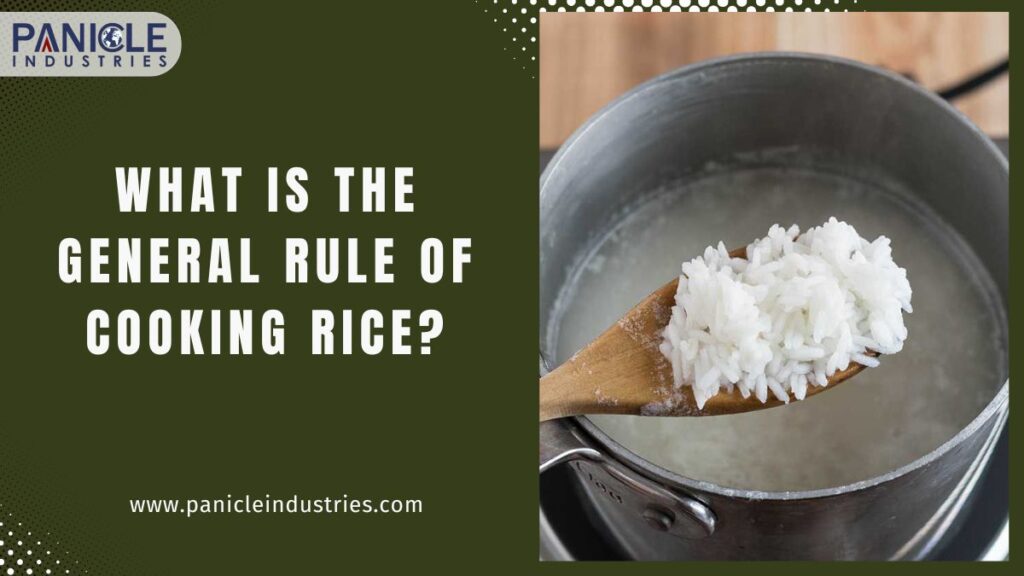Rice is a staple food in many households around the world. It is easy to prepare, affordable, and can be used in countless recipes. But despite its simplicity, many people still struggle with cooking rice the right way. A common question that often arises is, what is the general rule of cooking rice? Whether you’re preparing white rice, brown rice, basmati, or jasmine rice, the basic principles of cooking remain quite similar. Understanding the correct rice-to-water ratio, cooking time, and heat levels can make a big difference in achieving fluffy, non-sticky rice.
In this blog, we will explore what is the general rule of cooking rice properly, how to avoid common mistakes, and tips for cooking different types of rice perfectly.
Why It’s Important to Cook Rice Properly
Cooking rice might seem like a simple task, but if not done correctly, it can become sticky, mushy, or even undercooked. Following the general rules ensures:
- Better texture – soft and fluffy instead of sticky or hard.
- Improved taste – evenly cooked rice absorbs flavors better.
- Consistent results – every time you cook.
- Healthier meals – with fewer added fats or salt.
By understanding what is the general rule of cooking rice, you save time and make your meals more enjoyable.
Also read: How to Know When Rice is Bad
Different Types of Rice
Before learning how to cook rice, it’s important to know that not all rice types are the same. Each variety has a different cooking time, texture, and water requirement.
Common Types of Rice:
- White Rice – Common and easy to cook, usually needs a 1:2 ratio of rice to water.
- Brown Rice – Takes longer to cook and needs more water (usually 1:2.5).
- Basmati Rice – Aromatic long-grain rice, needs soaking and a 1:1.5 ratio.
- Jasmine Rice – Soft and slightly sticky, usually uses a 1:1.5 ratio.
- Sticky or Glutinous Rice – Needs soaking and is often steamed rather than boiled.
Each type follows the same general rules but with small adjustments.
The General Rule of Cooking Rice
So, what is the general rule of cooking rice? The most widely accepted method includes these simple steps:
1. Measure the Rice and Water
The standard rule is a 1:2 ratio – one cup of rice to two cups of water (for white rice). This can vary depending on the type of rice.
2. Rinse the Rice
Rinse the rice under cold water to remove extra starch. This helps prevent stickiness and makes the rice fluffier.
3. Boil, Then Simmer
Bring the water to a boil first. Then, reduce the heat to low, cover the pot, and let it simmer.
4. Do Not Stir
Once covered, avoid stirring the rice. Stirring can break the grains and make them mushy.
5. Let It Rest
After cooking, let the rice rest for 5–10 minutes with the lid on. Then fluff with a fork.
Standard Rice-to-Water Ratios
Water-to-rice ratios vary depending on the type of rice. Here is a quick guide:
| Rice Type | Ratio (Rice:Water) | Cooking Time | Notes |
|---|---|---|---|
| White Rice | 1:2 | 15-20 mins | Easy and quick to cook |
| Brown Rice | 1:2.5 | 35-40 mins | Needs longer simmering |
| Basmati Rice | 1:1.5 | 12-15 mins | Soak before cooking |
| Jasmine Rice | 1:1.5 | 15 mins | Soft and aromatic |
| Parboiled Rice | 1:2.25 | 20-25 mins | Requires more water |
Always check the packaging instructions for best results.
Cooking Rice on the Stove
Cooking rice on the stovetop is the most common method.
Steps:
- Rinse 1 cup of rice.
- Add 2 cups of water in a pot.
- Add a pinch of salt or oil if desired.
- Bring it to a boil on high heat.
- Once boiling, reduce heat to low, cover, and simmer for 15–20 minutes.
- Turn off the heat and let it rest for 10 minutes.
- Fluff with a fork and serve.
Following this method will give you soft and fluffy rice every time.
Cooking Rice in a Rice Cooker
Rice cookers are convenient and give consistent results.
Advantages:
- No need to monitor heat.
- Automatically turns off when done.
- Keeps rice warm for hours.
How to Use:
- Rinse rice and add it to the cooker.
- Add water as per instructions (usually marked in the cooker).
- Close the lid and turn it on.
- Wait until the rice cooker switches to ‘warm’.
- Let it sit for 5–10 minutes, then fluff and serve.
Using a rice cooker is one of the easiest ways to follow what is the general rule of cooking rice.
Microwave Cooking Method
You can also cook rice in the microwave.
Steps:
- Rinse 1 cup of rice.
- Place it in a large microwave-safe bowl with 2 cups of water.
- Cover with a microwave-safe lid or wrap.
- Microwave on high for 10 minutes.
- Then reduce to medium heat for another 10 minutes.
- Let it sit for 5 minutes before fluffing.
This method is quick but requires a microwave-safe container that can handle the steam pressure.
Tips to Perfect Your Rice Every Time
Here are some quick tips to always get good results:
- Use a heavy-bottomed pot to avoid burning.
- Keep the lid closed while simmering.
- Avoid opening the lid frequently – steam is important for cooking.
- Fluff with a fork instead of stirring.
- Don’t skip resting time after cooking.
These habits will help you master the art of cooking perfect rice.
Common Mistakes to Avoid
Even when you know what is the general rule of cooking rice, mistakes can happen. Here are a few to watch out for:
- Using too much or too little water – this affects texture.
- Stirring while cooking – breaks the grains.
- Cooking on high heat throughout – leads to uneven cooking.
- Not rinsing the rice – can make it sticky.
- Skipping the resting time – rice becomes wet or undercooked.
Fixing these habits will greatly improve your rice dishes.
Cooking Rice with Add-ins
To make your rice more flavorful, consider adding the following while cooking:
- Salt – enhances flavor.
- Oil or butter – adds richness.
- Whole spices – like cardamom, bay leaf, or cinnamon.
- Stock instead of water – for a rich taste.
These extras turn plain rice into a tasty side dish or even a main course.
Storing Leftover Rice
Proper storage is essential to avoid food waste or spoilage.
Storage Tips:
- Let rice cool completely before storing.
- Store in an airtight container in the refrigerator.
- Use within 3–4 days.
- Reheat with a little water to restore moisture.
- Do not leave cooked rice at room temperature for more than 2 hours.
Following these steps ensures your rice stays safe and tasty for later meals.
Conclusion
In summary, understanding what is the general rule of cooking rice can help anyone, from beginners to experienced cooks, prepare rice that is fluffy, tasty, and perfectly cooked every time. The key lies in using the right rice-to-water ratio, rinsing the rice, simmering without stirring, and allowing it to rest after cooking. Different rice types may require slight changes in method, but the basic principles remain the same.
Whether you’re cooking rice on the stovetop, in a rice cooker, or in a microwave, applying these simple rules will bring you closer to perfect rice every time. So next time you ask, “what is the general rule of cooking rice?”, you’ll know exactly what to do.


